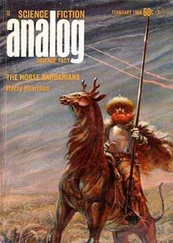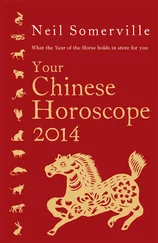36 30 Fractures of the Tibia Anatomy Fracture Types Incidence and Causation Clinical Features and Presentation Imaging and Diagnosis Treatment References
37 31 Fractures of the Patella Anatomy Fracture Types Incidence and Causation Clinical Features and Presentation Imaging and Diagnosis Treatment Transverse Fractures Extra‐articular Fragmentation References
38 32 Fractures of the Femur Anatomy Proximal (Capital) Physeal Fracture Diaphyseal Fractures Distal Physeal Fractures Fractures of the Third Trochanter Fractures of the Supracondylar Tuberosity/Gastrocnemius Muscle Avulsion Fractures of the Trochlear Ridges Fractures of the Femoral Condyles Avulsion Fractures of the Cranial Cruciate Ligament References
39 33 Fractures of the Pelvis Anatomy and Biomechanics Fracture Types, Incidenceand Causation Clinical Features and Presentation Fractures of the Tuber Coxae Fractures of the Iliac Wing Fractures of the Iliac Shaft Fractures of the Ischium Pubic Fractures Risk Factors Associated with Pelvic Fractures Imaging and Diagnosis Treatment Options and Recommendations Case Selection and Management Results References
40 34 Fractures of the Vertebrae and Sacrum Introduction Fractures of the Axial Dens with Atlantoaxial Subluxation Atlantoaxial Subluxation Complete Ventral Luxation of the Axis Fractures of the Atlas Fractures of the Axis Fractures of Cervical Vertebrae 3 to 7 Fractures of Thoracolumbar Vertebrae Fractures of the Sacrum Fractures of the Coccygeal Vertebrae References
41 35 Fractures of the Ribs Anatomy Fracture Types Incidence and Causation Clinical Features and Presentation Imaging and Diagnosis Treatment Options and Recommendations Results References
42 36 Fractures of the Head Introduction Fractures of the Cerebral Skull Fractures of the Facial Skull Fractures of the Mandible Fractures of the Hyoid Apparatus References
43 37 Fractures in Foals Introduction Physeal Fractures Considerations in the Management of Orthopaedic Injury in the Foal Fractures of the Distal Phalanx Fractures of the Proximal and Middle Phalanges Fractures of the Proximal Sesamoid Bones Fractures of the Mid and Distal Third Metacarpal and Metatarsal Bones Fractures of the Proximal Metacarpus and Metatarsus Fractures of the Cuboidal Bones of the Carpus and Tarsus Radial Fractures Fractures of the Ulna Humeral Fractures Fractures of the Scapula Calcaneal Fractures Tibial Fractures Femoral Fractures Pelvic Fractures Guidelines for Implant Removal References
44 Index
45 End User License Agreement
1 Chapter 3 Table 3.1 Predictable sites of stress fractures and stress remodelling. Table 3.2 Features and qualifiers of features applicable to fracture descri...
2 Chapter 7 Table 7.1 Appropriate sedatives for acute fracture management. Table 7.2 Recommended doses of opioid analgesics.
3 Chapter 8Table 8.1 Design details of screws commonly used in equine surgery includin...Table 8.2 Geometric details of standard and special plates used in horses.
4 Chapter 9Table 9.1 Pre‐operative surgical checklist for equine osteosynthesis.Table 9.2 Classification of open fractures and reported risk of infection i...
5 Chapter 10Table 10.1 Dose ranges of sedative and opioid drugs commonly used in horses...Table 10.2 Dose ranges of induction agents and muscle relaxants commonly us...Table 10.3 Peripheral nerve blocks used to produce analgesia of the distal ...
6 Chapter 13Table 13.1 Equipment for cast removal.
7 Chapter 15Table 15.1 General rehabilitation guidelines.Table 15.2 Techniques to improve muscle function and reduce compensatory mu...
8 Chapter 24Table 24.1 Location of carpal chip fractures in 591 racehorses (principally...Table 24.2 Specific location of carpal chip fractures in racing TB and raci...Table 24.3 Radiographic projections in which individual slab fractures of t...
1 Chapter 1 Figure 1.1 Number of papers on equine fractures published in the veterinary ...
2 Chapter 2 Figure 2.1 Normal femur of an embryonic mouse (a) and one that was transplan... Figure 2.2 Third metatarsal bones from a neonatal Thoroughbred foal (left) a... Figure 2.3 Diagrammatic illustration of blood supply to a long bone of the a... Figure 2.4 Microradiograph of a 100 μm thick, undecalcified section of corti... Figure 2.5 Composite photomicrograph of a transverse section through the lat... Figure 2.6 Diagrammatic illustration of plexiform bone, based on the histolo... Figure 2.7 The geometric properties of bone can be modified through the coor... Figure 2.8 Diagrammatic representation of an isolated secondary osteon compl... Figure 2.9 Model of hierarchical structure of collagen fibrils. Three helica... Figure 2.10 Schematic diagram showing progressive steps in the mineralizatio... Figure 2.11 Graphical and schematic illustrations of the relationship betwee... Figure 2.12 Graphical and schematic illustrations of the relationship betwee... Figure 2.13 Graphical and schematic illustrations of the relationship betwee... Figure 2.14 Schematic to illustrate the effects of the mechanical properties... Figure 2.15 Effects of progressive radiation damage to the organic phase of ... Figure 2.16 Eccentric compressive loading on bones of the appendicular skele... Figure 2.17 Line drawing illustrating the stress intensity (colour density) ...
3 Chapter 3 Figure 3.1 Schematic illustration of bone microstructure showing major osteo... Figure 3.2 Common fracture configurations and simplified causative forces il... Figure 3.3 Tensile loads cause the bone to elongate and narrow. Failure occu... Figure 3.4 Compressive loads cause the bone to shorten and widen. Failure oc... Figure 3.5 Shear stresses arising from torsional loading result in tensile a... Figure 3.6 Bending creates tensile and compressive loads on different sides ... Figure 3.7 Three‐point bending configurations have a central load point at t... Figure 3.8 A shear force is an external force acting on an object or surface... Figure 3.9 Representative load–deformation curve for a whole bone. Figure 3.10 Diagrammatic representations of stresses and strains. (a) A forc... Figure 3.11 Example of a stress–strain curve of a bone sample. Figure 3.12 Compressive stress–strain behaviour of one compact and two trabe... Figure 3.13 Factors influencing the deformation of bone subjected to a bendi... Figure 3.14 Formulae for the area moment of inertia and the polar moment of ... Figure 3.15 Behaviour of viscoelastic materials. (a) Creep is an increase in... Figure 3.16 The mechanical behaviour of bone is strongly dependent on strain... Figure 3.17 An idealized S – N curve for cortical bone illustrates the relatio... Figure 3.18 Example of a rising R ‐curve ( K Rvs. crack length) for transverse... Figure 3.19 Schematic illustrations of some toughening mechanisms possible i... Figure 3.20 Salter–Harris physeal injury classification. Type I injuries are...
4 Chapter 5 Figure 5.1 T1W 3D dorsal plane standing MRI images of a front foot. (a) With... Figure 5.2 Medial to lateral radiograph of the cranial thorax made with the ... Figure 5.3 Parasagittal fracture of a right forelimb proximal phalanx. (a) D... Figure 5.4 Images of a right metacarpophalangeal joint. (a) Flexed dorsopalm... Figure 5.5 Ultrasonographic evaluation of an accessory carpal bone fracture.... Figure 5.6 Abaxial fracture (arrows) of a left hind medial proximal sesamoid... Figure 5.7 Forelimb scintigram of a two‐year‐old Thoroughbred racehorse with... Figure 5.8 Adult warmblood showjumper that went acutely lame in its left hin... Figure 5.9 Scintigrams of the proximal forelimb of a two‐year‐old Thoroughbr... Figure 5.10 Four‐year‐old Thoroughbred racehorse with acute severe right hin... Figure 5.11 Evaluation and surgical planning of two‐third carpal bone fractu... Figure 5.12 Four‐year‐old Thoroughbred racehorse with acute onset right fore... Figure 5.13 Six‐year‐old eventer with acute onset moderate right forelimb la... Figure 5.14 T2* GRE dorsal plane sMRI image of a metatarsophalangeal joint. ...
Читать дальше












